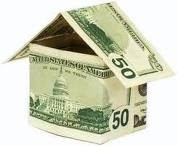TIME TO PLANT TREES?
 Most of the trees that grow in my yard were planted in the fall, some a week of a snow fall. It originally started because I am a big bargain shopper. That is a huge plus, places like Home Depot and Lowe's take drastic discounts. Last year I picked up a nice Weeping Cherry for $12.00, and about 5 other tree that I shared with neighbors.
Most of the trees that grow in my yard were planted in the fall, some a week of a snow fall. It originally started because I am a big bargain shopper. That is a huge plus, places like Home Depot and Lowe's take drastic discounts. Last year I picked up a nice Weeping Cherry for $12.00, and about 5 other tree that I shared with neighbors. Pick the right tree!
Remember to think about the tree in its maturity and how it fits into your landscape. I suggest avoiding temprorary trees, I am not a fan of birches because the loose their leaves early, as they age the tend to not look very attractive. The other tree is a silver maple - they are weeds of the tree world, they grow very fast, but rarely do they take the nice shape of the other many species of Maples. Then make sure to follow planting instruction, if you have bad soil buy a couple of bags of soil to go around the root. Water it thouroughly, and wrap the lower part of the tree to protect it, mainly from rabbits who chew on the young trees and bushes in the winter.
WHY ARE TREES SO IMPORTANT?
 |
| My son Weston in front of a Huge Oak in Indian Camp Creek County Park |
I was wondering how much Oxygen a tree produces and how much Carbon they absorb - here is some info...
"A single mature tree can absorb carbon dioxide at a rate of 48 lbs./year and release enough oxygen back into the atmosphere to support 2 human beings."
- McAliney, Mike. Arguments for Land Conservation: Documentation and Information Sources for Land Resources Protection, Trust for Public Land, Sacramento, CA, December, 1993
- McAliney, Mike. Arguments for Land Conservation: Documentation and Information Sources for Land Resources Protection, Trust for Public Land, Sacramento, CA, December, 1993
"One acre of trees annually consumes the amount of carbon dioxide equivalent to that produced by driving an average car for 26,000 miles. That same acre of trees also produces enough oxygen for 18 people to breathe for a year."
- New York Times
- New York Times
" A 100-ft tree, 18" diameter at its base, produces 6,000 pounds of oxygen."
- Northwest Territories Forest Management
- Northwest Territories Forest Management
"On average, one tree produces nearly 260 pounds of oxygen each year. Two mature trees can provide enough oxygen for a family of four."
- Environment Canada, Canada's national environmental agency
- Environment Canada, Canada's national environmental agency
"Mean net annual oxygen production (after accounting for decomposition) per hectare of trees (100% tree canopy) offsets oxygen consumption of 19 people per year (eight people per acre of tree cover), but ranges from nine people per hectare of canopy cover (four people/ac cover) in Minneapolis, Minnesota, to 28 people/ha cover (12 people/ac cover) in Calgary, Alberta."
- U.S. Forest Service and International Society of Arboriculture joint publication
- U.S. Forest Service and International Society of Arboriculture joint publication


















